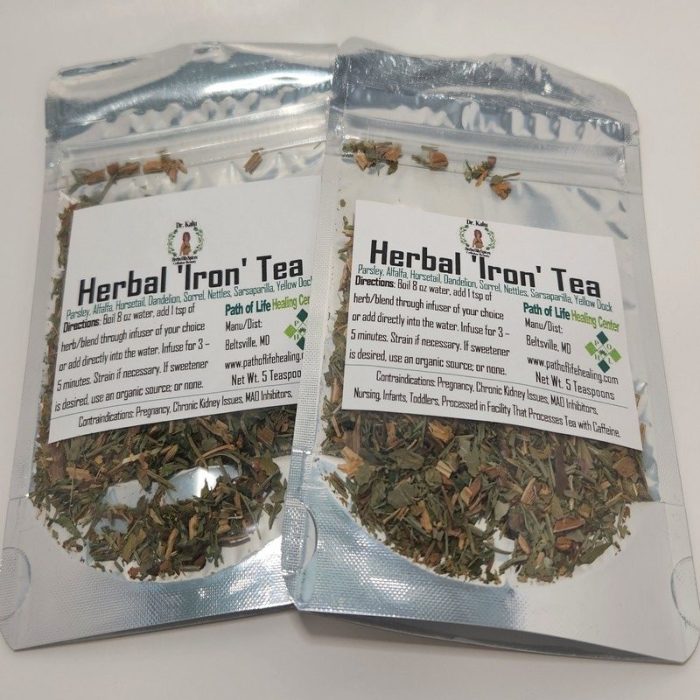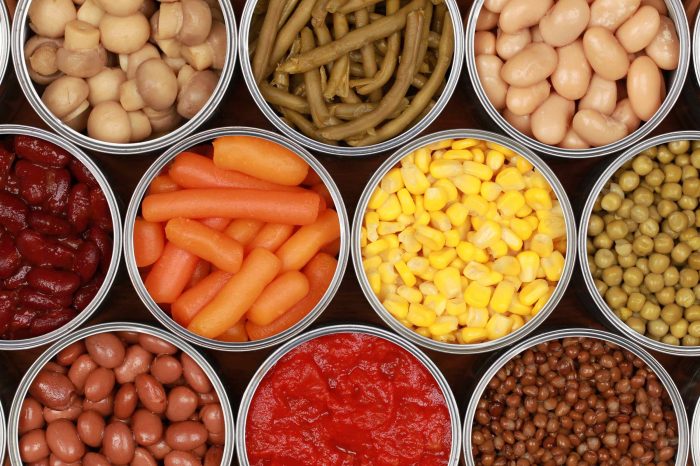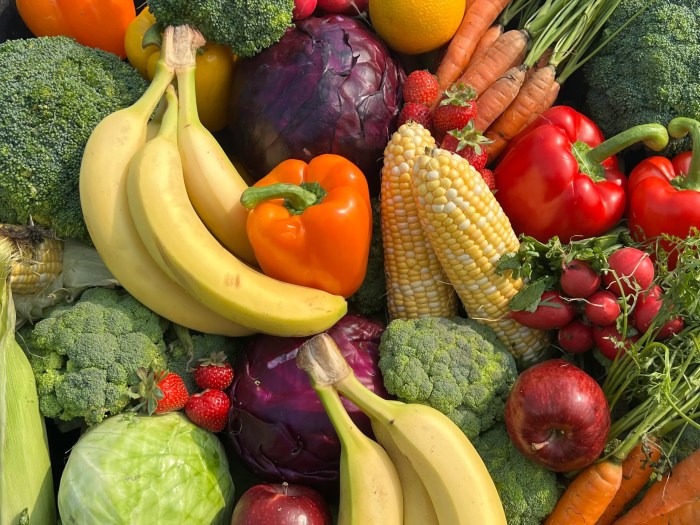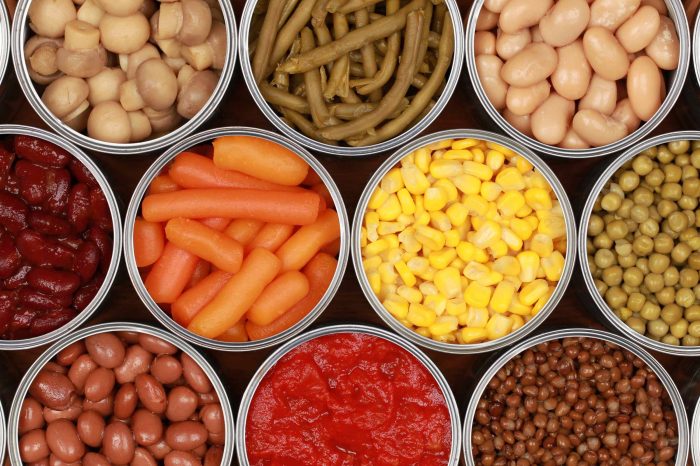Low iron level causes are multifaceted, stemming from a variety of dietary, physiological, and medical factors. From dietary deficiencies to blood loss, and absorption issues, this comprehensive guide explores the intricate web of causes contributing to low iron levels. We’ll delve into the specific roles of diet, blood loss, absorption, and other potential contributing factors, including chronic diseases and pregnancy.
Understanding these causes is crucial for effective diagnosis and treatment. This exploration will equip you with the knowledge to identify the root cause of your low iron levels and take the necessary steps to address it. We’ll cover dietary recommendations, potential medical conditions, and the importance of consulting with healthcare professionals.
Dietary Deficiencies
Iron deficiency is a common health concern, affecting millions worldwide. It often stems from an inadequate intake of iron-rich foods or impaired absorption of the iron present in the diet. Understanding the role of diet in maintaining healthy iron levels is crucial for preventative health measures.Iron is an essential mineral crucial for various bodily functions, including oxygen transport and cell growth.
Insufficient iron can lead to fatigue, weakness, and impaired cognitive function. Addressing dietary deficiencies is a vital step in preventing and treating low iron levels.
Iron-Rich Foods
A balanced diet rich in iron-rich foods is fundamental for maintaining optimal iron levels. These foods provide the body with the necessary building blocks for red blood cell production. Iron-rich foods include a variety of sources, from animal products to plant-based options.
- Red meat, such as beef and lamb, is an excellent source of heme iron, a form of iron more readily absorbed by the body.
- Poultry, including chicken and turkey, also contains iron, although in smaller quantities compared to red meat.
- Seafood, like oysters and clams, provides iron, along with other essential nutrients.
- Iron-fortified cereals and grains are a valuable source for those with dietary restrictions or specific needs.
- Leafy green vegetables, such as spinach and kale, are rich in non-heme iron. Note that vitamin C-rich foods enhance absorption.
- Legumes, such as beans and lentils, offer a good source of non-heme iron.
- Dried fruits, like raisins and apricots, are excellent sources of iron.
Importance of Vitamin C
Vitamin C plays a crucial role in enhancing iron absorption. It facilitates the conversion of non-heme iron into a form more easily absorbed by the body. Consuming vitamin C-rich foods alongside iron-rich foods significantly improves iron uptake.
Diet and Iron Levels
A diet deficient in iron-rich foods can lead to low iron levels. This is particularly true for individuals with restricted diets, such as vegetarians or vegans, who may need to be particularly mindful of iron intake and absorption. Individuals who have conditions affecting iron absorption or have increased iron requirements (like pregnant women) may be at higher risk for iron deficiency.
Low iron levels can stem from various factors, like poor diet or certain medical conditions. Understanding the different ways illnesses can impact our bodies is crucial. For example, did you know that factors like inadequate iron intake, heavy menstrual bleeding, and certain chronic diseases can all contribute to low iron levels? While we’re on the subject of health risks, it’s also important to be aware of the risks associated with casual contact and HIV transmission.
Learning about safe practices and how to protect yourself from potential health concerns is key. For more information on HIV transmission through casual contact, check out this helpful resource: hiv transmission casual contact hiv risk. Ultimately, staying informed about potential causes of low iron levels is a great way to maintain overall health.
Dietary Patterns and Iron Deficiency
Certain dietary patterns can increase the risk of iron deficiency. These patterns often lack sufficient sources of iron or vitamin C, which hinders iron absorption. Examples include diets heavily reliant on processed foods, those excluding significant food groups, and restrictive eating habits.
Comparison of Iron Content
The iron content varies significantly among different food types. Red meat generally boasts a higher iron content compared to vegetables or grains. However, the bioavailability (how effectively the body absorbs the iron) differs. Vegetables and grains, when paired with vitamin C-rich foods, can contribute significantly to overall iron intake.
Iron Content in Common Foods
| Food Item | Iron Content (mg) |
|---|---|
| Beef (3 oz cooked) | 2.7 |
| Spinach (1 cup cooked) | 2.7 |
| Lentils (1 cup cooked) | 3.6 |
| Fortified Cereal (1 cup) | 10-12 |
| Oysters (3 oz) | 4.0 |
| Chicken Breast (3 oz cooked) | 1.0 |
Note: Values may vary based on preparation methods and specific food types.
Blood Loss
Blood loss is a significant contributor to iron deficiency anemia. When blood is lost, the body loses the iron contained within the red blood cells. This loss can occur rapidly or gradually over time, depending on the cause and severity of the bleeding. Understanding the types of blood loss, the conditions that cause them, and the mechanisms involved is crucial for diagnosis and treatment.Chronic blood loss, even in small amounts, can deplete iron stores over time, leading to iron deficiency anemia.
This is a critical factor to consider in evaluating individuals with low iron levels.
Role of Blood Loss in Iron Deficiency
Iron is an essential component of hemoglobin, the protein in red blood cells that carries oxygen throughout the body. When blood is lost, the iron within those red blood cells is also lost. This loss of iron can overwhelm the body’s ability to replenish its iron stores, resulting in iron deficiency. The amount of iron lost during bleeding directly correlates with the severity of the deficiency.
Low iron levels can stem from various factors, like poor diet or heavy menstrual bleeding. Interestingly, if you’re considering an IUD insertion, understanding what to expect during the procedure is important what to expect during an iud insertion. However, iron deficiency can also be linked to certain underlying health conditions, making it crucial to get a proper diagnosis.
So, if you’re experiencing low iron, don’t hesitate to talk to your doctor.
Types of Blood Loss
Blood loss can be categorized into several types, each with different underlying causes.
- Menstrual Bleeding: Women of childbearing age experience regular menstrual bleeding, which can lead to iron deficiency if blood loss is excessive. Factors like heavy periods, hormonal imbalances, and certain medical conditions can contribute to increased menstrual blood loss. The severity of menstrual bleeding varies significantly between individuals, and it is a significant cause of iron deficiency anemia in women.
- Ulcers: Stomach ulcers and other gastrointestinal ulcers can cause chronic blood loss. This blood loss is often gradual but can accumulate over time, leading to iron deficiency. The bleeding associated with ulcers may be intermittent, making detection challenging.
- Internal Bleeding: Internal bleeding can originate from various sources, including injuries, certain medical conditions (like certain cancers or inflammatory bowel diseases), or even blood clotting disorders. The source of internal bleeding can be difficult to pinpoint, requiring medical investigations for diagnosis.
Conditions Causing Chronic Blood Loss
Several conditions can lead to chronic blood loss, contributing to iron deficiency anemia.
- Gastrointestinal Conditions: Conditions like inflammatory bowel disease (IBD), diverticulosis, and certain cancers in the gastrointestinal tract can cause chronic blood loss through ulcers, inflammation, or bleeding from the intestinal lining. For example, ulcerative colitis and Crohn’s disease can cause chronic blood loss in the digestive tract, resulting in iron deficiency.
- Certain Cancers: Certain types of cancer can cause internal bleeding, particularly those affecting the gastrointestinal tract or the lungs. The bleeding may be a symptom of the cancer itself or a result of the tumor’s growth or spread.
- Abnormal Blood Clotting: Disorders that affect blood clotting can lead to excessive bleeding, even from minor injuries. This can contribute to iron deficiency over time.
Factors Contributing to Increased Blood Loss
Several factors can increase blood loss, making individuals more susceptible to iron deficiency anemia.
- High-Intensity Exercise: Intense or prolonged exercise can lead to minor tears in blood vessels, resulting in slight blood loss. While not always a significant factor, repeated episodes of intense exercise might contribute to iron deficiency in some individuals, especially those with poor diets.
- Medications: Certain medications, such as aspirin and nonsteroidal anti-inflammatory drugs (NSAIDs), can increase the risk of gastrointestinal bleeding. Their use should be carefully monitored in individuals with a history of iron deficiency or gastrointestinal problems.
- Poor Diet: A diet deficient in iron can exacerbate the impact of blood loss on iron levels. The body’s ability to compensate for blood loss is affected by the overall iron intake.
Mechanisms of Blood Loss Leading to Low Iron Levels
When blood is lost, the body loses the iron-containing hemoglobin in red blood cells. The body’s iron stores are then depleted to maintain red blood cell production. This can happen rapidly with significant blood loss or gradually with chronic blood loss.
The rate of iron loss from blood loss is directly related to the volume of blood lost and the frequency of the blood loss.
Severity of Blood Loss and Impact on Iron Levels
The severity of blood loss significantly impacts the levels of iron in the body.
| Blood Loss Category | Iron Level Impact |
|---|---|
| Minor, intermittent blood loss (e.g., occasional nosebleeds) | Minimal impact on iron levels; body can often compensate |
| Moderate, chronic blood loss (e.g., heavy menstrual bleeding) | Progressive depletion of iron stores, potentially leading to iron deficiency anemia |
| Severe, acute blood loss (e.g., major trauma) | Significant and rapid depletion of iron stores, potentially causing severe anemia |
Absorption Issues
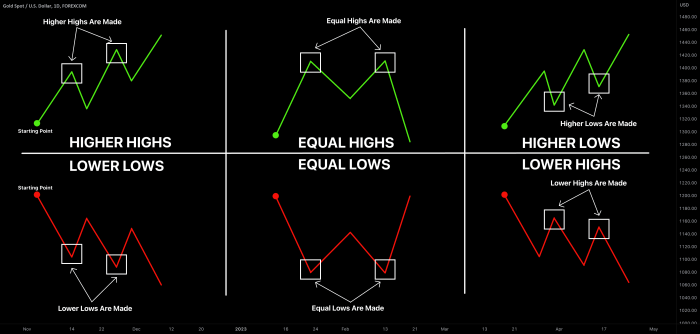
Iron absorption is a crucial step in maintaining healthy iron levels. If your body isn’t effectively absorbing iron from the foods you eat, you could develop iron deficiency anemia. Understanding the intricacies of iron absorption and the factors that can hinder it is key to optimizing iron intake.Iron absorption in the body is a complex process. It involves the interplay of various factors and is influenced by both dietary components and underlying health conditions.
Dietary iron exists in two primary forms: heme iron and non-heme iron. Heme iron, found in animal products, is more easily absorbed than non-heme iron, which is found in plant-based foods.
Iron Absorption Process
The body efficiently absorbs iron from ingested food. The process begins in the stomach where hydrochloric acid releases iron from food. This released iron then travels to the small intestine, where it’s absorbed into the bloodstream. Iron absorption is influenced by several factors, including the form of iron consumed and the presence of other substances in the diet.
Factors Impairing Iron Absorption
Several factors can interfere with the efficient absorption of iron. Dietary components, such as phytates and polyphenols, can bind to iron, reducing its bioavailability. Phytates, found in grains and legumes, and polyphenols, found in tea, coffee, and certain vegetables, can hinder iron absorption. Additionally, certain medications and underlying health conditions can negatively impact iron absorption.
Conditions Affecting Iron Absorption
Certain medical conditions can disrupt the normal absorption of iron. Conditions like celiac disease, Crohn’s disease, and other inflammatory bowel disorders can impair iron absorption by damaging the intestinal lining. Also, conditions affecting the stomach, such as achlorhydria (lack of stomach acid), can affect iron absorption.
Heme vs. Non-Heme Iron
Heme iron, derived from animal sources, is absorbed more readily than non-heme iron, which is found in plant-based foods. The body absorbs heme iron with an efficiency rate of about 20-30%, while non-heme iron absorption is significantly lower, typically around 2-20%. This difference is primarily due to the presence of specific proteins that facilitate heme iron absorption.
Impact of Antacids and Medications
Antacids, commonly used to relieve heartburn, can reduce iron absorption. Certain medications, including some antibiotics and proton pump inhibitors, can also interfere with iron absorption by altering the stomach’s acidity. Individuals taking these medications may need to take iron supplements at a different time of day to optimize absorption.
Impact of Cooking Methods on Iron Bioavailability
Cooking methods can significantly affect iron bioavailability. Cooking methods that increase the exposure of iron-rich foods to heat, such as stir-frying or roasting, may enhance iron absorption. On the other hand, acidic cooking methods, such as those using vinegar, may hinder iron absorption.
Foods That Hinder Iron Absorption
Certain foods contain compounds that can reduce the absorption of iron. These compounds bind to iron, making it less available for absorption in the body.
| Food Item | Absorption Hinderance |
|---|---|
| Tea (especially black tea) | High polyphenol content |
| Coffee | High polyphenol content |
| Spinach | High phytate content |
| Whole grains | High phytate content |
| Legumes | High phytate content |
Other Contributing Factors

Low iron levels aren’t always a straightforward issue stemming from dietary choices or blood loss. A range of other factors can contribute to iron deficiency, including chronic illnesses, pregnancy, genetic predispositions, and inflammatory conditions. Understanding these additional contributing factors is crucial for comprehensive diagnosis and effective treatment.Chronic diseases, pregnancy, genetic predispositions, and inflammatory conditions can all significantly impact iron absorption and storage, leading to lower iron levels.
This multifaceted nature of iron deficiency underscores the importance of a thorough evaluation by a healthcare professional.
Chronic Diseases and Iron Deficiency
Chronic diseases, such as inflammatory bowel disease (IBD), rheumatoid arthritis, and kidney disease, often disrupt the body’s ability to absorb and utilize iron. These conditions can cause inflammation, which in turn reduces iron absorption from the gut. Furthermore, some chronic diseases may directly impact iron storage or utilization within the body. For example, individuals with chronic kidney disease may have difficulty producing the hormone erythropoietin, crucial for red blood cell production, which can indirectly affect iron levels.
Low iron levels can stem from various factors, like poor diet or blood loss. However, understanding potential underlying conditions like inflammatory bowel disease is crucial. For example, if you’re exploring treatments for inflammatory bowel disease, stelara ustekinumab what you should know might provide valuable insights. This medication can impact iron levels, so it’s important to discuss any potential interactions with your doctor.
Ultimately, figuring out the cause of low iron levels requires a thorough assessment.
Pregnancy and Iron Deficiency
Pregnancy places substantial demands on a woman’s iron stores. The growing fetus requires significant iron for its development, and the expanding blood volume in the mother also increases the body’s iron needs. If iron intake isn’t sufficient to meet these increased demands, iron deficiency can easily develop. Pregnant women are particularly susceptible, highlighting the importance of prenatal care and iron supplementation in these cases.
Iron deficiency during pregnancy can lead to complications like premature birth, low birth weight, and anemia in the mother.
Genetic Conditions and Iron Absorption
Certain genetic conditions can affect iron absorption and utilization. For instance, individuals with hemochromatosis, a genetic disorder, absorb iron excessively from the diet, potentially leading to iron overload. Conversely, other genetic conditions might impair iron absorption, resulting in deficiency. Genetic testing can help identify individuals predisposed to these conditions, allowing for early interventions and preventative measures.
Inflammation and Iron Absorption
Inflammation, a natural response to injury or infection, can interfere with iron absorption. In certain inflammatory conditions, the body may prioritize iron utilization for immune responses, thus reducing the amount available for red blood cell production. This can be particularly relevant in conditions like inflammatory bowel disease, where chronic inflammation in the digestive tract impairs iron absorption.
Medical Conditions Causing Low Iron Levels
A variety of medical conditions can contribute to low iron levels. These conditions can affect iron absorption, storage, or utilization in the body. A comprehensive list would include:
- Inflammatory bowel disease (IBD): Conditions like Crohn’s disease and ulcerative colitis disrupt the intestinal lining, impairing iron absorption.
- Celiac disease: This autoimmune disorder damages the small intestine, reducing the absorption of essential nutrients, including iron.
- Kidney disease: Reduced erythropoietin production can hinder red blood cell production, impacting iron utilization.
- Certain cancers: Some cancers can cause blood loss or impair iron absorption, leading to iron deficiency.
- Heavy menstrual bleeding: Significant blood loss during menstruation can deplete iron stores.
- Parasite infections: Some parasitic infections can cause blood loss and impair iron absorption.
- Certain medications: Some medications, such as aspirin and nonsteroidal anti-inflammatory drugs (NSAIDs), can increase blood loss, indirectly impacting iron levels.
Diagnosis and Treatment
Iron deficiency anemia, characterized by low iron levels, requires a methodical approach to diagnosis and treatment. Proper identification of the underlying cause is crucial for effective management and preventing complications. This process involves a combination of medical history review, physical examination, and specific diagnostic tests.The aim of diagnosis is not just to identify low iron levels, but also to determine the root cause.
This allows for targeted treatment that addresses the specific issue, rather than just treating the symptom. This targeted approach is essential for achieving optimal health outcomes and preventing future episodes of iron deficiency.
Diagnostic Process Overview
The diagnostic process for low iron levels typically begins with a thorough evaluation of the patient’s medical history, including dietary habits, any recent blood loss, and any underlying health conditions. A physical examination may also reveal signs suggestive of iron deficiency, such as pallor (pale skin) or tachycardia (rapid heartbeat).
Common Diagnostic Tests
Several tests are employed to confirm low iron levels and evaluate the extent of the deficiency. These tests often involve blood samples and can include:
- Complete Blood Count (CBC): This is a fundamental blood test that measures various components of the blood, including red blood cell count (RBC), hemoglobin (Hb), hematocrit (Hct), and mean corpuscular volume (MCV). Lower than expected values for these parameters often indicate iron deficiency anemia. A low RBC count, hemoglobin, and hematocrit, combined with a low MCV, often suggest microcytic anemia, a characteristic feature of iron deficiency.
- Serum Iron Level: This measures the amount of iron circulating in the blood. Low serum iron levels are a key indicator of iron deficiency.
- Ferritin Level: Ferritin is a protein that stores iron. Low ferritin levels often reflect iron deficiency, as the body’s iron stores are depleted.
- Total Iron-Binding Capacity (TIBC): This test measures the blood’s capacity to bind iron. In iron deficiency, the TIBC is usually elevated as the body attempts to compensate for the low iron levels.
- Transferrin Saturation: This calculation (serum iron divided by TIBC) provides a percentage reflecting the proportion of iron-binding capacity currently occupied by iron. A low transferrin saturation often accompanies iron deficiency.
Treatment Options
Effective treatment for low iron levels typically involves addressing the underlying cause and supplementing iron intake.
- Treating the Underlying Cause: Addressing the root cause of iron deficiency, such as heavy menstrual bleeding, gastrointestinal bleeding, or malabsorption issues, is paramount for long-term management. For instance, treating peptic ulcers or other bleeding conditions can prevent further iron loss and ensure that the iron supplementation is effective.
- Iron Supplements: Iron supplements are commonly prescribed to replenish iron stores and correct the deficiency. These supplements come in various forms, each with its own absorption characteristics and potential side effects.
Iron Supplements in Detail
Iron supplements are crucial in restoring iron levels. They come in different forms, each with varying absorption rates and potential side effects. Common types include ferrous sulfate, ferrous fumarate, and ferrous gluconate.
- Types of Iron Supplements: Ferrous sulfate is a common, affordable, and often effective choice. Ferrous fumarate generally provides a higher iron content per dose, potentially requiring a smaller daily intake. Ferrous gluconate has a lower iron content per dose but may be better tolerated by some individuals.
- Usage and Dosage: The appropriate dosage and duration of iron supplementation are determined by the severity of the deficiency and the individual’s response to treatment. It is crucial to follow the prescribed dosage carefully and to consult with a healthcare professional for guidance.
- Potential Side Effects: Common side effects of iron supplements include constipation, nausea, vomiting, and abdominal cramps. Taking iron supplements with food, especially high-fiber foods, may help mitigate these side effects. Individuals with pre-existing gastrointestinal conditions should consult their doctor before starting iron supplementation.
Diagnostic Tests Summary Table
| Test Name | Description |
|---|---|
| Complete Blood Count (CBC) | Measures various blood components, including RBC, Hb, Hct, and MCV. |
| Serum Iron Level | Measures circulating iron in the blood. |
| Ferritin Level | Reflects iron stores in the body. |
| Total Iron-Binding Capacity (TIBC) | Measures blood’s iron-binding capacity. |
| Transferrin Saturation | Percentage of iron-binding capacity occupied by iron. |
Illustrations and Visuals: Low Iron Level Causes
Understanding the complexities of low iron levels requires more than just words. Visual representations can help us grasp the processes and impacts involved, making the information more relatable and easier to comprehend. Visual aids bridge the gap between abstract concepts and tangible understanding, enabling a deeper engagement with the subject matter.
Iron Absorption Process
The process of iron absorption in the body is a complex interplay of various factors. A visual representation can highlight the key steps involved. Imagine a diagram with the small intestine as a central hub. Iron from ingested food, in various forms, must be absorbed into the bloodstream. The diagram would show iron molecules crossing the intestinal lining, with specific proteins facilitating this process.
Different dietary components, like vitamin C, can enhance absorption, depicted as an arrow boosting the iron transfer. Conversely, factors like phytates in some plant foods can hinder absorption, shown as an arrow reducing the iron transfer. The illustration would also indicate the role of iron-transporting proteins in carrying iron to different parts of the body for utilization.
Impact of Blood Loss on Iron Levels
Blood loss, whether from menstruation, ulcers, or other causes, directly impacts iron levels. A visual representation of this can show a comparison between a healthy individual’s iron levels and someone experiencing significant blood loss. The diagram would visually demonstrate how the body’s iron stores decrease with consistent or substantial blood loss. A graph depicting iron levels over time, showing a steep decline following a period of blood loss, would be highly effective.
The illustration could also highlight the cumulative effect of repeated blood loss, showcasing how prolonged losses can lead to severe iron deficiency.
Diet and Iron Absorption Connection
A visual showcasing the link between diet and iron absorption would be highly beneficial. This could be an infographic with a diagram of a plate of food, with different food groups highlighted. The diagram would highlight the different types of iron found in various foods (heme and non-heme iron) and their absorption potential. An important feature of the illustration should include the significance of combining iron-rich foods with vitamin C-rich foods to enhance absorption.
For example, a juicy orange alongside a plate of lentils, or a spinach salad with a side of strawberries, could visually represent this concept.
Causes of Low Iron Levels
An infographic summarizing the different causes of low iron levels would be highly effective. This infographic should clearly categorize and visually differentiate the various factors leading to low iron. The infographic could be a circular diagram with different branches leading from a central point (low iron levels). Each branch could represent a specific cause: dietary deficiencies, blood loss, absorption issues, and other contributing factors (e.g., pregnancy, certain medical conditions).
Each cause would be accompanied by icons or images representing the respective factors. This visual representation would provide a clear overview of the potential causes and help users understand the interconnectedness of these factors.
Iron Molecule Structure, Low iron level causes
A detailed image of an iron molecule would be useful for visualizing the fundamental structure of iron. The image should highlight the iron atom’s atomic structure, showcasing its specific electron configuration and its role in the molecule. The image would show the atom’s electron shells and illustrate how iron can form various chemical bonds, which is important in its role in the body.
The illustration could also highlight the importance of iron in hemoglobin, explaining how iron’s structure allows it to bind with oxygen. This would create a more tangible understanding of iron’s function at a molecular level.
Conclusive Thoughts
In conclusion, low iron level causes are diverse and interconnected. This discussion highlights the significance of a balanced diet rich in iron-rich foods, the importance of addressing potential blood loss issues, and the factors that can impact iron absorption. Recognizing these contributing elements is vital for preventing and managing low iron levels. Remember, this information is for educational purposes only, and consulting a healthcare professional is essential for accurate diagnosis and personalized treatment plans.


